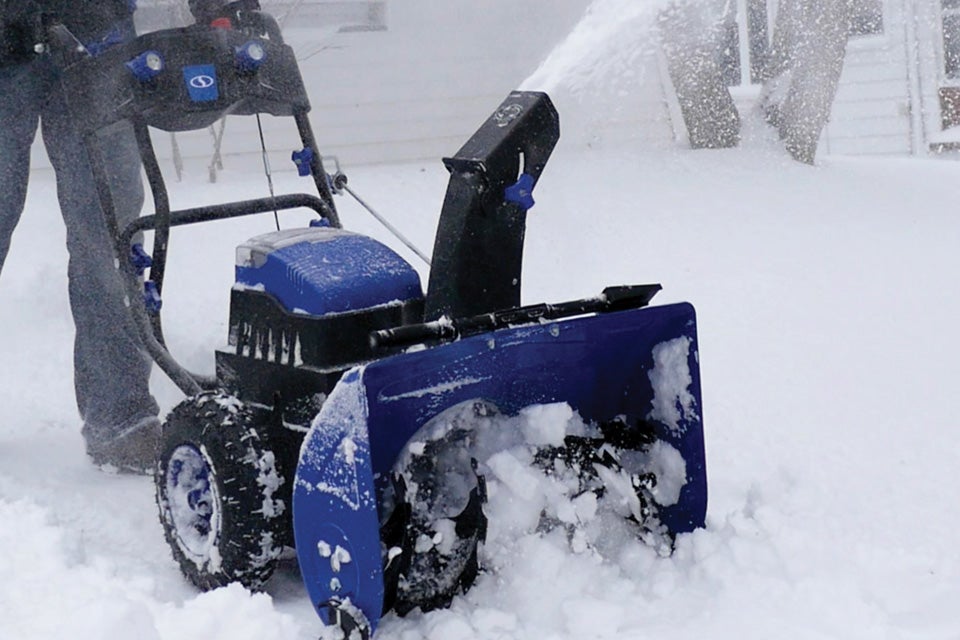If you are thinking: “it clears snow, what else do I need to know?” then you are among the majority who don’t care much to understand the design of snowblowers, as long as they do the job. However, understanding the design of snowblowers can help you understand how they work, and what features you need to get the most for your money, and out of your machine.
Single-Stage
The most basic of snowblowers is referred to as a single-stage. It has an auger that turns, which collects the snow and fires it out the discharge chute. Additionally, when the auger spins against the surface being cleared it helps to propel the machine forwards. This means that the operator needs to guide the blower, but for the most part it will propel itself. It also means that single-stage blowers are only good for hard, smooth surfaces.
Single-stage blowers come in widths of one to two feet, so they are great for smaller, narrower areas, and due to their design are only recommended for light snowfalls. If you are clearing large areas or get a lot of snow annually then you may want a dual-stage blower which will have more power and a wider clearing ability.
Dual-stage

A dual-stage snowblower has an impeller behind the auger, which propels snow up through the chute. This allows the auger to work more effectively through heavy or wet snow. It also throws snow farther, so you don’t get huge snowbanks built up right around your driveway. Dual-stage blowers also have larger clearing widths – so you spend less time clearing.
Because of how dual-stage gas snowblowers are designed, they need to have engine-powered wheels so you don’t need to work as hard to push it around. This also means that the auger does not contact the surface and the height is adjustable, so you can use these types of blowers on any type of surface: grass, gravel, concrete, dirt, etc.
Auger
This is a spiral metal, rotating blade at the front of the snowblower that cuts through snow and sends it to the back of the machine. In a single-stage machine it is also responsible for sending snow up and out the chute, while in a dual-stage snowblower the impeller or turbine will propel the snow out. It is important that the auger be made of quality, durable materials as it will take a lot of punishment over long winters.
Turbine
This is the second part of a dual-stage snowblower – and resides just behind the auger. It grabs the snow and propels it up the chute. Also known as the impeller, this component should be made from durable materials so it can deal with the occasional rock or chunk of ice that your snowblower may pick up.
Chute
Just behind the auger housing you will find the chute – basically a big chimney that directs where your snow goes. A good chute is easily adjustable so you can ensure that snow is directed where you need it to go. Look for chutes that you can turn with one hand while directing the snowblower with the other, as this will save you time. And you’ll definitely be grateful to get the job done quickly when it’s freezing outside and you’re late for work.



